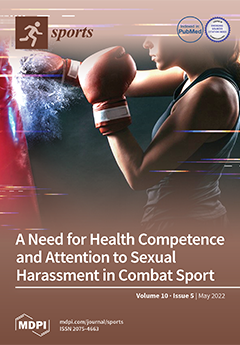Monitoring the many aspects that are crucial to an athlete’s performance progress is vital for further training planning and for the development of performance and the sport. We evaluated a four-year change (2018 vs. 2022) in the current nutritional and cardiovascular health status of the most successful elite-level female swimmer in Slovenia. Body composition and dietary intake were assessed using dual-energy X-ray absorptiometry and a standardized food questionnaire. The concentration of blood lipids, blood pressure, and serum micronutrients (B
12, 25(OH)D), potassium, calcium, phosphorus, magnesium, and iron) were measured. The four-year comparison showed an improved body composition status (i.e., increased body mass and decreased body fat (percentage and mass), increased lean soft tissue and total bone mineral density (BMD) (i.e., significantly decreased BMD of a left femoral neck and increased BMD of a spine and head)). We also measured an improvement in the cardiovascular health status of some markers (i.e., decreased total cholesterol, triglycerides, and blood pressure but increased low-density lipoprotein cholesterol), most likely due to the differences in assessed dietary intake (i.e., lower carbohydrate intake, higher total and saturated fat intake, and lower sodium intake). Notably, nutrient intakes that are generally of concern (eicosapentaenoic acid (EPA) and docosahexaenoic acid (DHA), vitamin B
12 and D, calcium, iron, and zinc (except for fiber intake)) were all within recommended ranges. However, the athlete’s vitamin K and potassium intake were not adequate. Furthermore, in 2018, the athlete did not consume dietary supplements, while she now regularly uses several dietary supplements, including EPA and DHA omega-3, vitamin D, multivitamins, carbohydrate powder, and sports drink. Moreover, from the micronutrient serum, only iron levels deviated from the reference values (37 μmol/L vs. 10.7–28.6 μmol/L). The presented screening example using valid, sensitive, and affordable methods and with rapid organizational implementation may be a viable format for regular monitoring.
Full article






